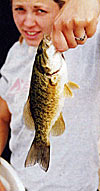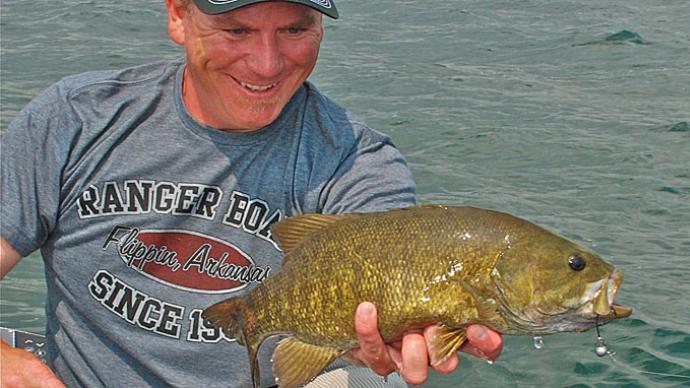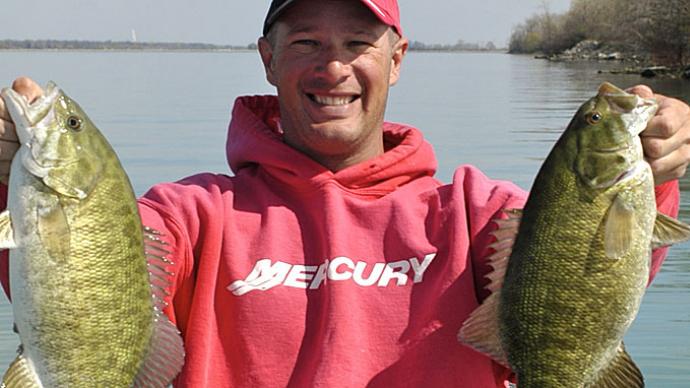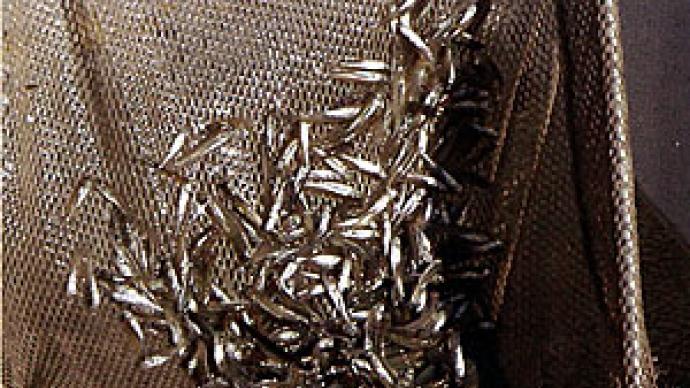
A common topic on the PondBoss discussion forum (www.pondboss.com) is the potential for managing both largemouth and smallmouth bass together in a pond. Based on our sampling this past fall, I have one new "case history" that adds a little more insight to this topic.
Many people like diversity in their ponds, often including both largemouth bass and smallmouth bass. After all, bass are bass, right? Not hardly. The general consensus from most fishery biologists and private pond consultants is largemouth bass typically replace smallmouths in small pond settings. Loss of smallies can happen quickly, as I have seen in typical "hill ponds." By that, I mean a pond with a constructed dam, and typically filled by runoff in the watershed. However, there has been some thought on the discussion forum perhaps the sand/gravel pit type of excavated pond may be able to sustain both of these black bass species. Largemouth bass readily adapt to most ponds and can easily reproduce. Smallmouth, on the other hand, need well defined habitat, especially gravel to spawn. But, reproduction is only part of the equation.
We finished fall sampling three managed gravel pits a few miles north of town. We sample these ponds with electrofishing and trap nets every other fall during even numbered years. One reclaimed pit covers about 1.7 acres surface area. Productivity is low in many of these pits, but landscaped peripherally, esthetically is absolutely gorgeous with sparkling clear blue water. Pond owner Jim Mannerud calls it his aquarium. He likes to watch fish as much or more than he likes to catch them!

This particular pond was initially managed with smallmouth bass only. In spring 1994, the area was blessed with exceptional rainfall and a nearby pit connected to this one. Largemouth bass and bluegill migrated shallow flats to gain access to this pit. Life changed in this water. We had a situation where a pond full of smallmouth bass now contained largemouth bass as well. Our original prediction was the smallmouths would quickly disappear. We were partially right. Take a look at Figure 1. First of all, quite a few largemouths made the trip overland, as fall 1994 samples showed. 40% largemouths, the rest smallies. You'll also see smallmouth bass quickly declined in abundance in relation to the largemouth bass. By 1996, largemouths wrestled their way beyond 80% of bass. The surprise was, through fall of 2002, some smallmouths were still present. That changed when we sampled in fall of 2004, when we did not collect a single smallmouth bass.

So, it took 10 years, but largemouths finally eliminated smallmouths from this gravel pit. Case histories tend to accumulate over time, and they really have influenced how I think about pond management. First of all, smallmouths did not immediately disappear from the pond. Second, I believe a person could maintain at least a few smallmouth bass in this gravel pit simply by stocking a few subadult or adult smallies each year. If a person stocked 8-12 inch smallmouth bass, they would survive, even though we wouldn't expect their offspring to survive. I believe this really comes down to interest level of an individual pond owner. Fishery biologists are always taught to keep it simple, but my interactions with the Pond Boss folks over the last couple of years have really shown me how interested pond owners can have a lot of fun with a little additional diversity in their ponds. The difference is that such interested pond owners generally don't mind spending a little money or time to "spice up" their ponds. I can see the attraction!
Reprinted with permission from Pond Boss Magazine



